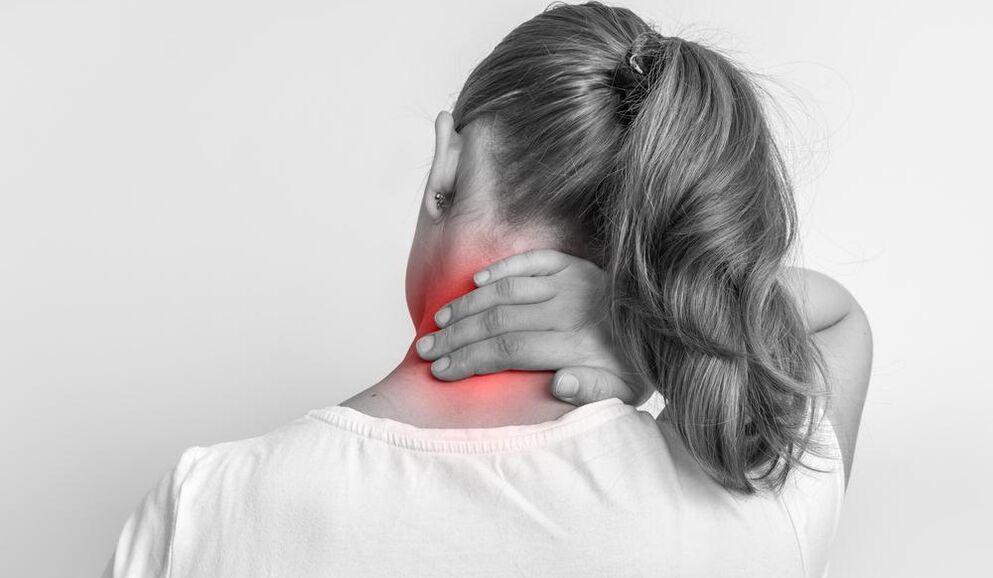Cervical osteochondrosis is characterized by patient-specific complaints.

Usually, the first and most common is pain.
They appear on the neck, between the shoulder blades, on the hands. Pain in the joints (wrist, elbow, or shoulder), with cervical osteochondrosis, can manifest as shooting or pain, causing numbness, tingling. In addition, there may be increased susceptibility of the extremities to the effects of hypothermia, decreased strength and development of clumsiness of the hands.
Cervical osteochondrosis is often accompanied by headaches. However, they can also have different properties. Numbness in the frontal area, ears, eye sockets, and scalp is typical.
The disease is also characterized by various plant diseases. These include unstable blood pressure and pulse, a lump in the throat and palpitations, shortness of breath, and in some cases, panic attacks.
In advanced forms, cervical osteochondrosis is associated with severe limitation of movement, muscle weakness in the upper and lower extremities, and impaired blood supply to the brain.
Dizziness, unsteady walking, general weakness, and visual impairment are often present. Patients often complain of increased fatigue, worsening mood, and episodes of depression.
The static disorder in this disease is subluxation of the vertebrae and limited mobility of the segment.
Violation of blood circulation can cause disturbances in brain activity, manifesting as a single symptom. This, in turn, can lead to insufficient blood supply to the vertebrobasilar artery and, in some cases, stroke.
Depending on the indication, diagnostic measures are prescribed, including radiography and possibly functional testing; MRI of the brain (head) and cervical spine; Doppler ultrasonography of major arteries. If necessary, triple or double scans of intracranial and extracranial vessels can be performed. Mandatory are blood test, EEG, audiogram, electrocardiogram, electronic nystagmus. The exam also includes consultation with a cardiologist, endocrinologist, ophthalmologist, and otolaryngologist.
Cervical osteochondrosis. treat
For effective treatment, it is necessary to have a clear diagnosis and determine the cause of the patient's complaint.
How to Cure Cervical Osteochondrosis A neuropathologist who knows to choose the necessary measures. It includes physical rehabilitation (exercise therapy), prescription of drugs (if necessary and according to symptoms - intravenous and intramuscular injections, as well as blockade). Treatments also include physiotherapy, acupuncture, massage, and leech therapy.
Of course, the most effective is compounding the effect on the patient's body. However, practice has shown that the longest treatment outcomes are observed in the patient's physical recovery. Therefore, in many cases, well-chosen exercise therapy exercises can influence the cause of disease development. Meanwhile, other methods mostly influence the outcome of the disease. Therefore, they are often seen as additional therapeutic measures.
It should be noted that exercise therapy exercises, as well as other methods of influence, are always chosen individually.


















